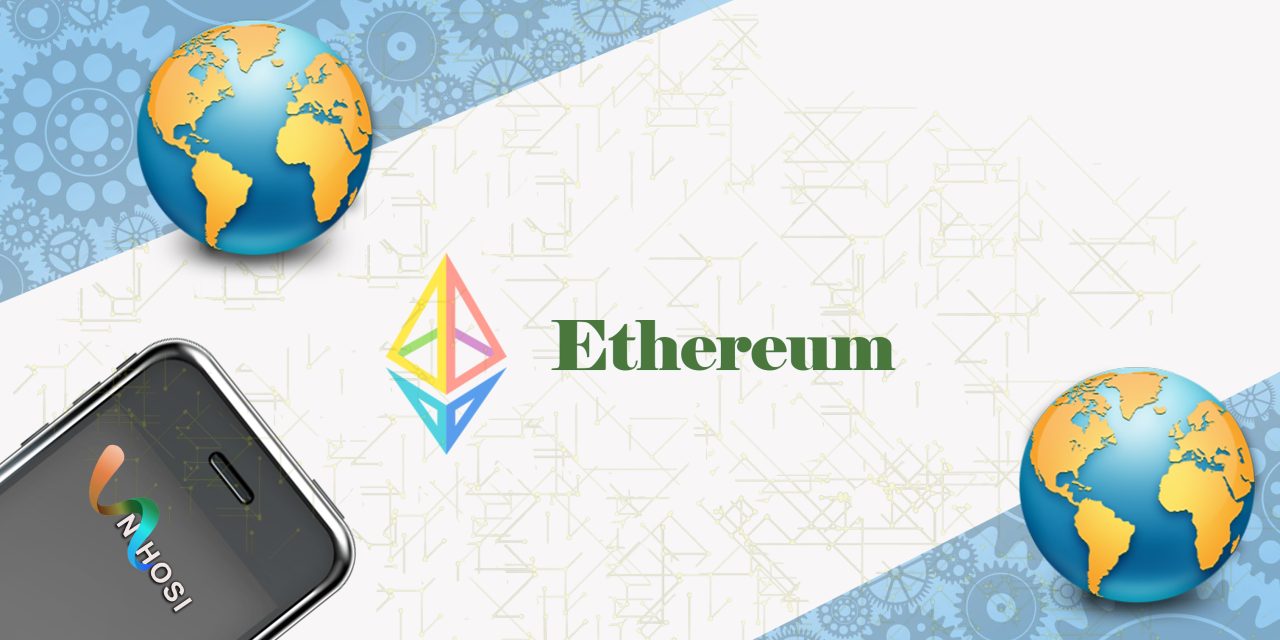Ethereum is a decentralized, open-source blockchain platform that enables the creation and execution of smart contracts and decentralized applications (apps). It was first proposed in 2013 by Vitalik Buterin, a Russian-Canadian programmer, and was launched in 2015.
Ethereum is different from other blockchain platforms in that it allows developers to build and deploy their decentralized applications on the Ethereum network. These applications are called dapps, and they are built using the Ethereum Virtual Machine (EVM), a decentralized runtime environment that allows anyone to execute arbitrary code on the Ethereum network.
The Ethereum network is powered by ether, which is the platform’s native cryptocurrency. Ether is used to pay for transactions and resources on the network, such as gas (the fee for executing a transaction or a smart contract) and storage.
In summary, Ethereum is a decentralized platform that allows developers to build and deploy dapps and smart contracts using the EVM and ether. It is an open and permissionless network, which means anyone can join and participate in the network without needing permission from a central authority.
Ethereum vs. Bitcoin
Ethereum and Bitcoin are both popular cryptocurrency platforms, but they have some key differences that set them apart. Bitcoin is a decentralized, peer-to-peer digital currency that was first introduced in 2009. It is the largest and most well-known cryptocurrency and is primarily used as a store of value and a means of exchange.
Ethereum, on the other hand, is a decentralized, open-source blockchain platform that enables the creation and execution of smart contracts and decentralized applications (dapps). In addition to being a cryptocurrency, ether, Ethereum also provides a development platform for dapps and smart contracts.
Some key differences between Ethereum and Bitcoin include:
Purpose: While Bitcoin was designed primarily as a digital currency, Ethereum was designed to be a platform for building and deploying dapps and smart contracts.
Consensus algorithm: Bitcoin uses a proof-of-work (PoW) consensus algorithm, while Ethereum uses a proof-of-stake (PoS) consensus algorithm. This means that the process of validating transactions and adding them to the blockchain is different for the two platforms.
Programming language: Bitcoin uses a simple, stack-based programming language for its smart contracts, while Ethereum uses a more powerful, Turing-complete programming language called Solidity.
Scalability: Ethereum has better scalability than Bitcoin, as it can process more transactions per second and has a more flexible design.
Overall, while Bitcoin and Ethereum share some similarities as cryptocurrency platforms, they have different purposes and features and are better suited for different types of applications.
Ethereum Blockchain Technology
The Ethereum blockchain is a decentralized, open-source platform that enables the creation and execution of smart contracts and decentralized applications (dapps). It is based on the Ethereum Virtual Machine (EVM), a decentralized runtime environment that allows anyone to execute arbitrary code on the Ethereum network.
The Ethereum blockchain is powered by ether, which is the platform’s native cryptocurrency. Ether is used to pay for transactions and resources on the network, such as gas (the fee for executing a transaction or a smart contract) and storage.
One of the key features of the Ethereum blockchain is its support for smart contracts, which are self-executing contracts with the terms of the agreement between buyer and seller being directly written into lines of code. This allows for the automation of complex, multi-party agreements without the need for intermediaries, and can be used to create a wide range of decentralized applications.
Overall, the Ethereum blockchain is a powerful and flexible platform for building and deploying decentralized applications and smart contracts. It is an open and permissionless network, which means anyone can join and participate in the network without needing permission from a central authority.
Non-Fungible Tokens in Ethereum
Non-fungible tokens (NFTs) are digital assets that are unique and cannot be replicated or replaced. They are built on blockchain technology and are often used to represent items with real-world value, such as collectables, artwork, and other one-of-a-kind items.
Ethereum is one of the most popular platforms for creating and issuing non-fungible tokens. It provides a standard called ERC-721, which defines the rules and requirements for creating and managing non-fungible tokens on the Ethereum blockchain. This standard allows developers to create and issue NFTs that are compatible with Ethereum-based dapps and wallets and makes it easier to manage and trade these tokens on the Ethereum network.
Some examples of non-fungible tokens on Ethereum include CryptoKitties, a game where players can breed and collect unique digital cats, and Cryptovoxels, a virtual world where players can buy and own virtual land and buildings.
Overall, non-fungible tokens are a unique and valuable type of digital asset that is gaining popularity on the Ethereum platform and other blockchain networks. They provide a way to represent and transfer ownership of one-of-a-kind items in a secure, transparent, and immutable manner.
Ether and Ethereum: What’s the Difference?
Ether and Ethereum are often used interchangeably, but they refer to different things. Ether (ETH) is the native cryptocurrency of the Ethereum platform. It is used to pay for transactions and resources on the Ethereum network, such as gas (the fee for executing a transaction or a smart contract) and storage. Ether is also used as a means of exchange and a store of value, and can be traded on cryptocurrency exchanges like other cryptocurrencies.
Ethereum, on the other hand, is a decentralized, open-source blockchain platform that enables the creation and execution of smart contracts and decentralized applications (dapps). It was first proposed in 2013 by Vitalik Buterin, a Russian-Canadian programmer, and was launched in 2015.
In summary, Ether is the cryptocurrency of the Ethereum platform, while Ethereum is the platform itself. They are closely related but have different purposes and functions.
Ethereum Benefits
Ethereum is a decentralized, open-source blockchain platform that enables the creation and execution of smart contracts and decentralized applications (dapps). It has many benefits, including:
Decentralization: Ethereum is a decentralized platform, which means that it is not controlled by any one institution or authority. This freedom from centralized control is one of its most appealing features. As a result, it is more impervious to censorship, manipulation, and outage, and it gives users more sovereignty over their data and assets.
Open-source: Ethereum is an open-source platform, which means that its code is publicly available and can be audited and modified by anyone. This promotes transparency and collaboration and allows for the development of a diverse ecosystem of applications and tools.
Smart contracts: Ethereum allows developers to create and deploy smart contracts, which are self-executing contracts with the terms of the agreement between buyer and seller being directly written into lines of code. This allows for the automation of complex, multi-party agreements without the need for intermediaries, and can be used to create a wide range of decentralized applications.
Flexibility: Ethereum is a flexible platform that supports a wide range of applications and use cases. It has a powerful, Turing-complete programming language (Solidity) that allows developers to build and deploy complex decentralized applications, and has a vibrant ecosystem of tools and resources to support their development.
Overall, Ethereum has many benefits that make it a popular choice for developers and users who want to build and use decentralized applications and smart contracts.
Ethereum Disadvantages
There are a few disadvantages to using Ethereum. One of the main disadvantages is that it can be slower and more expensive than other blockchain networks because it processes more complex transactions. This is because Ethereum has a built-in programming language, which allows developers to build and run more advanced applications on the network. This added complexity can also make Ethereum less secure than other blockchain networks. Additionally, Ethereum’s value is heavily tied to the success of the applications built on its platform, so if those applications fail or are not widely adopted, the value of Ethereum may suffer.
I hope this helps! Let me know if you have any questions or need any further information.











Subscribe To Our Newsletter
Join our mailing list to receive the latest news and updates from our team.
You have Successfully Subscribed!